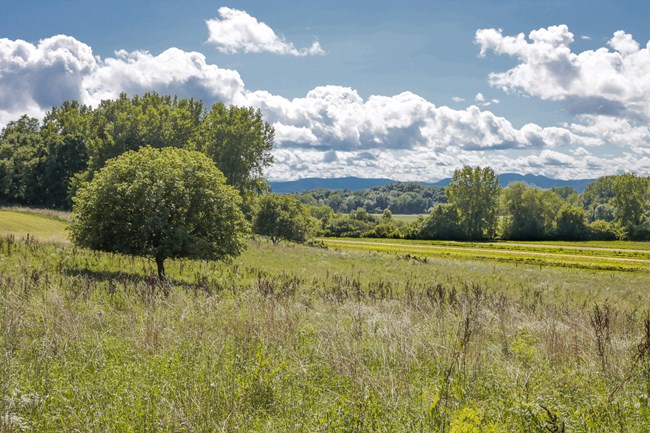Last updated: October 24, 2019
Article
Farming and the Forever Business: Agricultural Landscape Management at Martin Van Buren National Historic Site

NPS Photo
“This agricultural land has been in active use for hundreds and hundreds of years,” explained Superintendent Megan O’Malley, “and the only way you could do that is to plan for the long-term… the farm today is planning for the long-term health of this soil, for the long-term fertility of this soil, so that it can stay active for generations into the future.” Considering that Columbia County, New York has lost more than half of its farmland in the past fifty years, this forward-looking view is more important than ever.
Martin Van Buren was a progressive farmer for the mid-nineteenth century, and his personal and political identities were intricately tied to the land. To understand his views on westward expansion, his presidential candidacy as a member of the Free-Soil Party, and his personal identity as a farmer, we need to understand his relationship with the acres of cultivated land surrounding his home. The land also allows us to find relevancy in our twenty-first century world. Food insecurity and climate change are increasing threats to sustainable agriculture, making the preservation of land and soil a conversation at the forefront of public land management.
A partner like Roxbury Farm allows the landscape to both maintain its historic use and be on the cutting-edge of sustainable agriculture. Practicing community supported agriculture (CSA), Roxbury Farm is dedicated to a food system relying on close partnerships between the farmers and the customers. This allows for increased transparency, confidence in regenerative farming techniques, and fresh, high-quality food at a fair price. Natural fertilizers and crop rotation take the place of artificial fertilizers and pesticides. To reduce waste, the farm only grows what customers need, and any leftover produce is donated to local food pantries.
In addition to Roxbury Farm, the site has partnered with the Open Space Institute and the Olmsted Center for Landscape Preservation to compile and publish "Agricultural Management Guidelines for the Martin Van Buren National Historic Site." This report furthers our understanding of historic and modern agricultural uses of the site, and helps park managers plan for conservation. Learn more about the report and these partnerships through this short video created by the Olmsted Center for Landscape Preservation.
